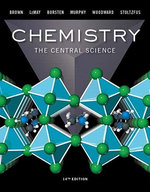True or false: (a) For molecules with similar molecular weights, the dispersion forces become stronger as the molecules become more polarizable.
Chapter 11, Problem 11.2(choose chapter or problem)
True or false:
(a) For molecules with similar molecular weights, the dispersion forces become stronger as the molecules become more polarizable.
(b) For the noble gases the dispersion forces decrease while the boiling points increase as you go down the column in the periodic table.
(c) In terms of the total attractive forces for a given substance, dipole–dipole interactions, when present, are always greater than dispersion forces.
(d) All other factors being the same, dispersion forces between linear molecules are greater than those between molecules whose shapes are nearly spherical.
(e) The larger the atom, the more polarizable it is.
Unfortunately, we don't have that question answered yet. But you can get it answered in just 5 hours by Logging in or Becoming a subscriber.
Becoming a subscriber
Or look for another answer
